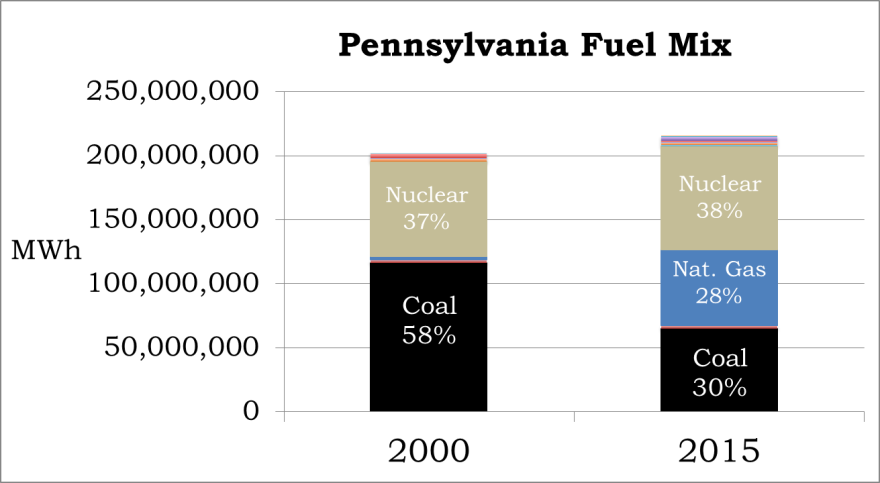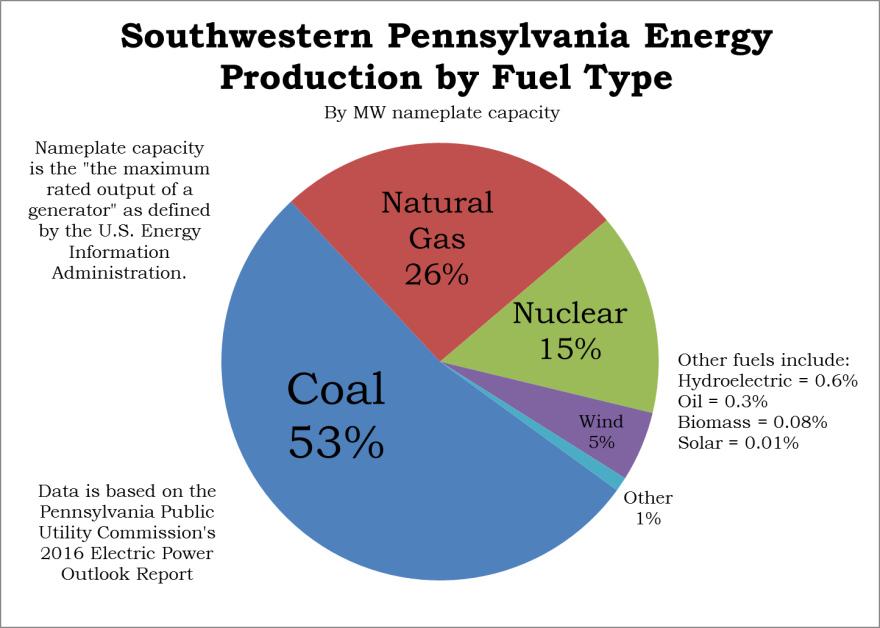When Environmental Protection Agency head Scott Pruitt visited a Greene County coal mine last week, he said, to applause, “the war on coal is done.”

It was the same line President Donald Trump delivered last month, when he announced an executive order aimed at dismantling the Obama administration’s Clean Power Plan, which had sought to reduce carbon emissions by 32 percent from 2005 levels by 2030. Trump had said then “we’re going to have clean coal, really clean coal.”
“The past administrations said that we had to choose between environment and job growth,” Pruitt said last week. “This administration says the opposite. We can achieve both and we will.”
But Inês Azevedo, co-director of the Climate and Energy Decision Making Center at Carnegie Mellon University, said that’s “almost infeasible.”
“Clean coal could only be clean coal if you have very aggressive air control technologies implemented and (are also) addressing the CO2 emissions by installing carbon capture and sequestration in parallel,” she said. “But that's really hard.”

Azevedo said it’s hard because it’s expensive. Despite the fact that academics first began exploring carbon capture and sequestration technology in 1989, it was only in January that the nation’s first “clean coal” power plant opened.
Meanwhile, power generation in Pennsylvania continues to move away from coal and toward natural gas. Azevedo said that’s due in part to federal regulations, but also to the fact that the price of natural gas is so low.
Dave Gaier is a spokesman for NRG Energy, which owns several power plants in Pennsylvania, including the coal-powered plant in Cheswick, northeast of Pittsburgh.
“I think coal is going to be phased out over time,” he said. “You’re going to see, certainly, more natural gas, because natural gas plants are much more flexible, they can ramp up and down much more quickly. That also helps ensure that we can integrate renewables.”
Gaier said NRG is committed to increasing its investment in renewable energy, particularly wind and solar. The company’s goal is to cut emissions of CO2 and other greenhouse gasses by 50 percent by 2030 and 90 percent by 2050.

Coal’s presence in powering Pennsylvania has been in sharp decline over the last decade and a half. In the year 2000, coal accounted for 58 percent of the electricity generated in the state. By 2015, that had dropped to 30 percent, largely due the growth in the natural gas industry. In that same time, carbon intensity, which is the amount of CO2 per unit of energy generated, declined by nearly one-third.
“While it’s very good news, it’s very little in comparison to what we need to achieve,” Azevedo said. “If you want to achieve a deep decarbonization, and we need to get there, we are closing a window for which we're able to do so.”
Azevedo said she worries that emissions might creep back up if the Trump administration finds the right mix of subsidies and reduced regulations to make coal a more attractive investment.

First Energy owns the nuclear-powered Beaver Valley Generating Station as well as several natural gas plants in Pennsylvania. But across its six-state footprint, more than half of its electricity generation comes from coal.
“President Trump’s executive order is an important first step,” said spokesperson Stephanie Walton. “While the action is positive, it’ll take some time, I think, to understand the long-term impacts of that order.”
First Energy has sold or shuttered its coal powered plants in Pennsylvania, but that was due to the company’s decision to exit the state’s competitive market altogether. Walton said they have no plans to phase out coal in other states.
Gaier and Azevedo both said coal will continue to be a part of the mix for a while, in part because it helps keep the grid stable. But Azevedo said it simply cannot be the dominating fuel for electricity generation.
“Otherwise we are closing the window where we can achieve emissions reductions that we need,” she said.




